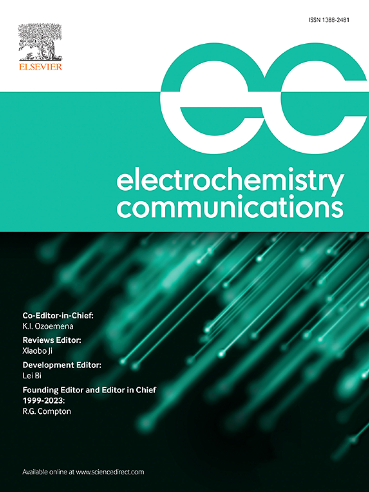用于液体活检的下一代碳纳米管电化学传感器
IF 4.2
3区 工程技术
Q2 ELECTROCHEMISTRY
引用次数: 0
摘要
血液样本中循环肿瘤DNA (ctDNA)的检测和定量为癌症诊断和治疗监测提供了一种非侵入性方法。虽然基于聚合酶链反应和下一代测序的高灵敏度和特异性分析是可用的,但这些分析的成本仍然很高,并且通常在采样后几天才能获得结果。相比之下,我们报告了一种高灵敏度电化学传感器分析的发展,该分析基于原始碳纳米管(CNT)电极,酪蛋白阻断层功能化和ctDNA序列特异性探针。该装置在不应用DNA扩增策略的情况下,对未稀释的人血浆中ctdna相关寡核苷酸序列的检测限为0.9 pM。此外,该方法对目标DNA具有特异性,当与野生型序列在高浓度(500 pM)下孵育时,不会产生任何可区分的信号。与许多其他电化学传感器材料和检测方法相比,以前已经证明了高灵敏度,我们的基于碳纳米管的检测方法在不到一个小时的时间内通过简单的两步检测提供结果。此外,swcnts传感器以大规模生产规模生产,使该平台适合于护理点应用。本文章由计算机程序翻译,如有差异,请以英文原文为准。
Next-generation carbon nanotube electrochemical sensors for liquid biopsy applications
The detection and quantification of circulating tumor DNA (ctDNA) from blood samples offers a non-invasive approach for cancer diagnostics and treatment monitoring. Although high- sensitivity and specificity assays are available based on polymerase chain reaction and next- generation sequencing, cost of these assays remains very high and results are typically achieved after days from sampling. Contrasting that, we report the development of a highly-sensitive electrochemical sensor assay, which is based on pristine carbon nanotube (CNT) electrodes functionalized with casein blocking layer and sequence-specific probes for ctDNA. The device demonstrated a 0.9 pM limit of detection towards ctDNA-related oligonucleotide sequences in undiluted human plasma, without applying DNA amplification strategy. Additionally, the assay was specific towards the target DNA and did not generate any distinguishable signal when incubated with wildtype sequence at high-concentration (500 pM). Contrasting to many other electrochemical sensor materials and assays that have previously demonstrated high sensitivity, our CNT-based assay provides results in less than an hour with a simple two-step assay. Additionally, the SWCNT sensors are manufactured at mass manufacturing scale, making this platform suitable for point-of-care applications.
求助全文
通过发布文献求助,成功后即可免费获取论文全文。
去求助
来源期刊

Electrochemistry Communications
工程技术-电化学
CiteScore
8.50
自引率
3.70%
发文量
160
审稿时长
1.2 months
期刊介绍:
Electrochemistry Communications is an open access journal providing fast dissemination of short communications, full communications and mini reviews covering the whole field of electrochemistry which merit urgent publication. Short communications are limited to a maximum of 20,000 characters (including spaces) while full communications and mini reviews are limited to 25,000 characters (including spaces). Supplementary information is permitted for full communications and mini reviews but not for short communications. We aim to be the fastest journal in electrochemistry for these types of papers.
 求助内容:
求助内容: 应助结果提醒方式:
应助结果提醒方式:


